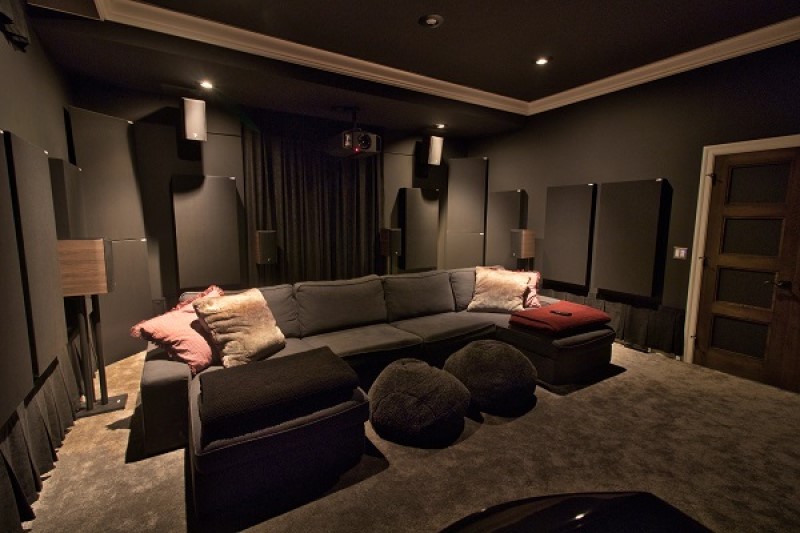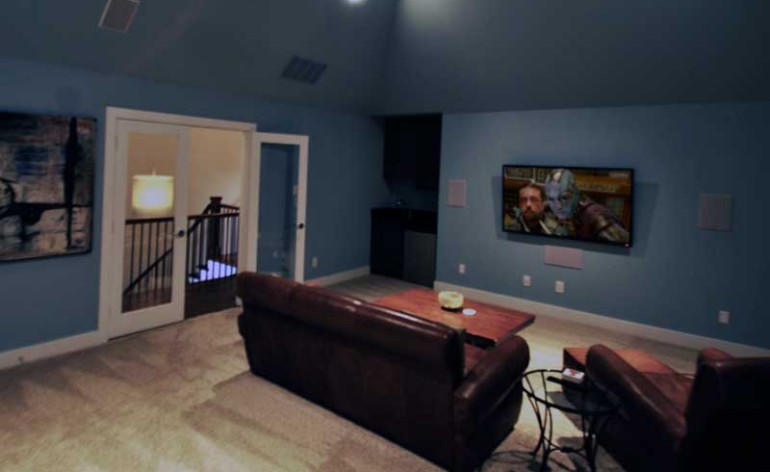7 Steps for Planning a Home Cinema System
Not everyone has the room for a dedicated home theater. We know, we get it. While we think there are real advantages to having a dedicated room, that is a lot of space to give up. And barring some child leaving to go to college, space is usually at a premium. If you didn’t buy the house with a dedicated home theater in mind, you likely don’t have the room. What you do have is a living room or great room. Your TV is already there and now you are looking for a more cinema-like experience from your home system. Where to start?
What is a Home Cinema System?
To start with, how do we define a home cinema system? If a dedicated home theater is a room that is only for watching movies, then a home cinema system is a room with multiple uses that also attempt to create an experience akin to going to the movies. This isn’t as easy as you’d expect, but it also isn’t impossible. Let’s go through the steps.
Step 1: Analyze Your Space
The first step when planning out a home cinema system is to look at your room. The room will be a major factor in everything from the size of your display to your speakers. The first question you need to answer is how much flexibility do you actually have. Can you move furniture around? Can you change what is on the walls? How important is maintaining the integrity of the décor to you? The more flexibility you have, the more options you’ll have available.
There are a lot of suggestions we have for making your room sound better. But if you can’t make changes, then those are all out, right? Knowing what you can or can’t reasonably do in your room before you get started will make your shopping easier, more directed, and less stressful.
Step 2: Cinematic Viewing Experience

Likely, you already have a display. Also likely, that TV is too small. Do you have the ability to upgrade your display? Or is it already built into a custom cabinet or surrounded by other things that will not allow you to increase its size? If you really want a cinematic experience, your home cinema system should have a display that is the same relative size as you’d experience at a movie theater. To get that, you’ll either have to upgrade the size of your display or move your seats closer to the TV you currently have. Either will work.
Step 3: Cinematic Sound
When planning a home cinema system, the first question many ask is what speakers they should buy. That’s the wrong question. You should be asking, what speakers can I buy? If you are in a room that has very little space left for speakers, you’re going to be shopping for small speakers. If you have a massive room and no nearby walls, you might be considering in- or on-ceiling speakers. The key here is that you want surround sound for a truly cinematic experience. The surround sound will give you that immersive experience you get at a movie theater.
To get good surround sound, you’ll need speakers in front of you (three if possible) and at least two speakers to your sides or behind you. This will allow your system to direct the sound around you. This is where analyzing your room is important. What are your speaker placement options? Can you put speakers on stands or do they need to be mounted to something? Are tower speakers an option or do you need small, satellite-type speakers? Most importantly, how far away are you sitting from your speakers? If you are sitting farther away than 12 feet, you will either need larger speakers or very efficient speakers. Check out our speaker placement guide for more information.
Step 4: Cinematic Bass
The subwoofer is the most controversial speaker in a home cinema system. It is a large box that does nothing but put out the lowest bass. Most people don’t understand why it is important and, even when explained to them, still don’t get it. But the subwoofer is the heart of the home cinema experience. It provides that kick-in-the-chest bass that you usually only experience at the movie theaters. For a truly cinematic experience, you need bass. Lots of it.
In most home cinema systems, this just isn’t possible. The rooms are usually just too big. Even if the cinema area is small, the bass doesn’t care. Is you room open to other rooms? Most home cinema areas share space with the kitchen, dining room, a hallway or two, and more. To get that cinematic bass, you’d need to fill all that space with bass. To do so, you’d need massive subwoofers and, honestly, you still wouldn’t be happy. The bass would rattle everything in the kitchen, it would be uneven in the cinema area, and you’d end up turning them down.
Instead, you’ll probably end up having to compromise with smaller subwoofers that are placed closer to where you sit. While this won’t give you the kick-in-the-chest you are looking for, it will give you some of the bass you are seeking. You could add tactile transducers to your couch to help replicate the experience of deep bass. You probably won’t, but you could.
Step 5: Address the Room

Next on our list, but first chronologically, you need to address your room. Up until this point, you should be still in the planning phase. Shopping for speakers, planning for subwoofers, getting approval from your significant other on the sizes and styles. But you shouldn’t have bought anything yet. Your room has a massive effect on the sound you experience. Stand in the middle of the cinema area and clap in a quiet room. Do you hear any ringing? When you have a bunch of people over for a party, it is hard to hear people in this space? That’s your room affecting the sound.
Before you place an order for a single speaker, you should do everything you can to your room. Anything you can do the improve the acoustics can make a huge difference in the sound you experience. This is why you must make these changes before you buy speakers. If not, you may decide you don’t like a speaker not because of its performance, but because of how it sounds in your room. Add room treatments (printed absorption panels are a favorite), a rug, more plush furniture, a bookshelf, or even moving things around can make a difference. Get the room fixed before you start auditioning speakers.
Step 6: Match Your Gear to Your System
Dedicated home theaters don’t change that much and this is doubly true for home cinema systems. Once you install your speakers and display, they are unlikely to change until something breaks. When shopping for your receiver and other gear, match their capabilities to what you own. Have only five floor-level speakers and a subwoofer? Don’t bother getting the top-of-the-line receiver that can power 11 floor-level speakers and feed four subwoofers. You’ll never use it. Also, if you have a display that can’t display a specific format (4k, Dolby Vision, etc.), don’t bother buying gear that can. You’ll never use it and you’ll waste money on features you will never use.
That said, be very careful about what you do buy. You may not need all the amplifiers in a specific receiver, but that doesn’t’ mean there aren’t reasons to buy a more expensive model. Do you like a specific streaming service? You can choose a player or receiver that can stream that natively. Are you interested in a specific room correction system? Buying a receiver with a more recent version of that room correction system makes a lot of sense. Pick the features you’ll actually use and buy accordingly. In the end you can save some money shopping this way.
Step 7: Resist FOMO
The driving force of many home theater enthusiasts is FOMO (fear of missing out). They read about a new surround sound format that requires ever more speakers and they run out to buy. They can’t help themselves. I’m here to tell you that 90% of the enjoyment you get from a home cinema system is in the image size, surround sound, and bass. Everything else can sound or look technically better, but not really all that different. If you address your room, your screen size, and proper speakers and subwoofer, you’re experiencing 90% (or more, honestly) that the dude with 9.4.6 system is experiencing. Sure, you could add more speakers or other gear, but your room isn’t set up for it and that’s okay.
Conclusion
A home cinema system is different from a dedicated home theater in that it takes an existing room and works within the limitations of the space. Our guide will help you plan accordingly and get as close to that cinematic experience as you can. You’ll end up wanting a dedicated theater room eventually, but this is a great stopgap. You’ll get most of the home theater experience without having to give up an entire room.


